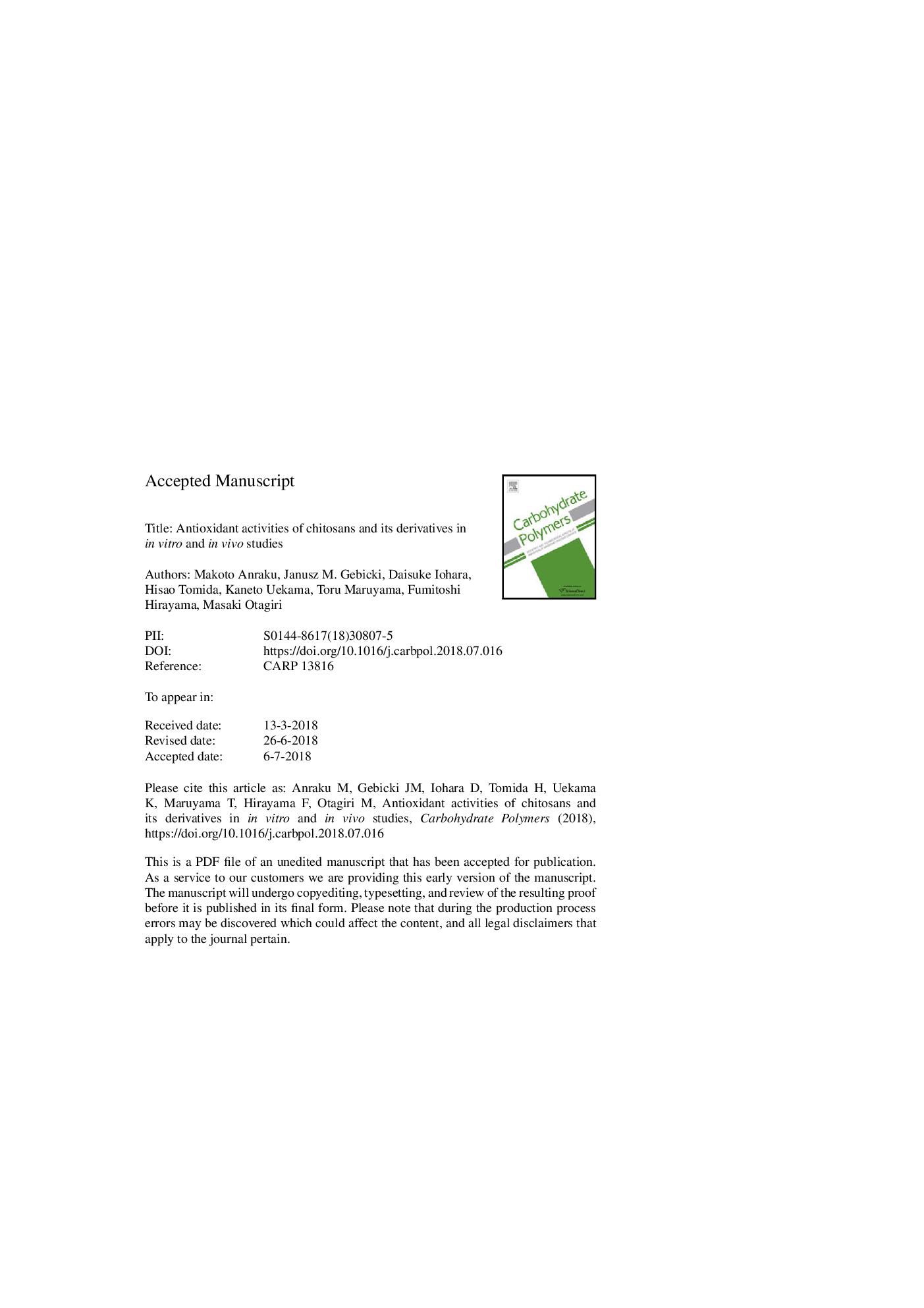| Article ID | Journal | Published Year | Pages | File Type |
|---|---|---|---|---|
| 7781250 | Carbohydrate Polymers | 2018 | 33 Pages |
Abstract
This review focuses on the in vitro and in vivo antioxidant activities of various chitosan preparations, including those with different molecular weights and degrees of acetylation and the nanofibers produced from them. In in vitro studies, low molecular weight (LMW) chitosan with high degrees of deacetylation has more potent antioxidant properties than those of high molecular weight (HMW) chitosan. On the other hand, HMW chitosan has higher adsorption properties than those of LMW chitosan. On the basis of the in vitro results obtained, the ingestion of chitosan and nanofiber derived from it, with moderate MW and degrees of acetylation results in a significant reduction in oxidative stress in several chronic oxidative stress related diseases such as the metabolic syndrome and renal failure. In the future, chitosan and related nanofibers with presumed antioxidant properties may be used as a new source of antioxidant, as a possible food supplement, as an ingredient or in the pharmaceutical industry.
Keywords
DAC5-HTTphHMWCAAPHMCP-1LMWDMWCRFHMWLMWC2,2′-azobis (2-amidinopropane) dihydrochlorideROSAntioxidanttheophyllineOxidative stressChronic renal failureRenal failureNanofibershigh molecular weightlow molecular weightMonocyte chemotactic protein-1high molecular weight chitosanlow molecular weight chitosanChitosanReactive oxygen species
Related Topics
Physical Sciences and Engineering
Chemistry
Organic Chemistry
Authors
Makoto Anraku, Janusz M. Gebicki, Daisuke Iohara, Hisao Tomida, Kaneto Uekama, Toru Maruyama, Fumitoshi Hirayama, Masaki Otagiri,
